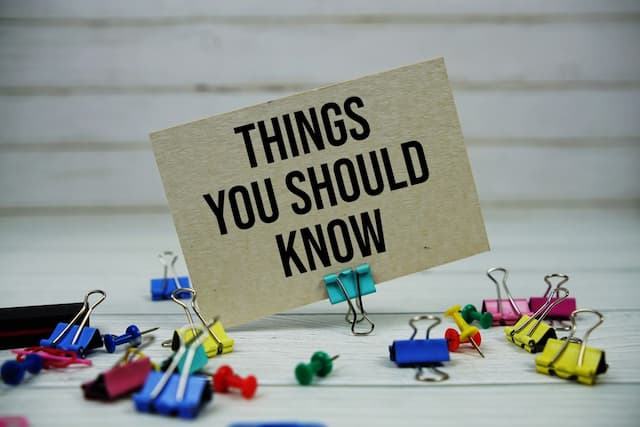Abigail, David’s Sister

There are two women named Abigail in the Old Testament. The first Abigail was the wife of Nabal whom David married after Nabal, a man from the house of Caleb, died (1 Samuel 25:3). Nabal is portrayed as a crude and mean man in all his dealings with others. Abigail is described as a “clever and beautiful” woman. Abigail is one of thirteen people who are called beautiful in the Old Testament.
The other Abigail appears in the Old Testament as David’s sister, “and [David’s] sisters were Zeruiah and Abigail” (1 Chronicles 2:16). This is the only place in the Old Testament where Zeruiah and Abigail are listed as sisters. Abigail was the mother of Amasa (1 Chronicles 2:17). That is the reason David told Amasa “You are my own flesh and blood” (2 Samuel 19:14 TNK). Amasa was appointed commander of the army by Absalom during his revolt against David. Amasa was killed by Joab, Zeruiah’s son.
There are many questions about Abigail’s family. One issue that makes the relationship between David and Abigail complicated is the identity of her father. Who was the father of Abigail? The Old Testament does not provide a clear answer to this question.
1 Chronicles 2:13–16 says that Abigail was the daughter of Jesse, David’s father, “Jesse became the father of Eliab his firstborn, Abinadab the second, Shimea the third, Nethanel the fourth, Raddai the fifth, Ozem the sixth, David the seventh; and their sisters were Zeruiah and Abigail.” According to this text, Abigail was the sister of David.
However, 2 Samuel 17:25 says that Abigail was the daughter of Nahash, “Now Absalom had set Amasa over the army in the place of Joab. Amasa was the son of a man named Ithra the Ishmaelite, who had married Abigail, daughter of Nahash, sister of Zeruiah, Joab’s mother” (2 Samuel 17:25).
In the biblical text, Abigail, the daughter of Nahash, appears in a close context with Shobi, the son of Nahash: “Now Absalom had set Amasa over the army in the place of Joab. Amasa was the son of a man named Ithra the Ishmaelite, who had married Abigail daughter of Nahash, sister of Zeruiah, Joab’s mother. The Israelites and Absalom encamped in the land of Gilead. When David came to Mahanaim, Shobi son of Nahash from Rabbah of the Ammonites, and Machir son of Ammiel from Lo-debar, and Barzillai the Gileadite from Rogelim, brought beds, basins, and earthen vessels, wheat, barley, meal, parched grain, beans and lentils, honey and curds, sheep, and cheese from the herd, for David and the people with him to eat” (2 Samuel 17:25–29).
The association of Nahash with Abigail and Shobi puts in doubt the paternity of Abigail. Nahash was the king of the Ammonites and an enemy of Israel during the reign of Saul, “No one was left of the Israelites across the Jordan whose right eye Nahash, king of the Ammonites, had not gouged out” (1 Samuel 10:27). When Nahash attacked Jabesh-gilead, the inhabitants of the city sent messengers to Saul, who was in Gibeah, to fight against Nahash. Saul and the army of Israel defeated Nahash. The Ammonites did not attack Israel again as long as Saul was king (1 Samuel 11:1–12).
The relationship between Nahash and David was different. While David was being persecuted by Saul, Nahash, the king of the Ammonites, showed kindness to David. “David said, I will show kindness to Hanun son of Nahash, just as his father showed kindness to me” (2 Samuel 10:2). The text does not say how this kindness to David was expressed. It is possible that Nahash befriended David at the time he was running away from Saul, the man whom Nahash considered to be his enemy. After Nahash died, “David sent his servants with condolences to Hanun for the loss of his father . . . for his father was kind to me” (2 Samuel 10:2 NAB).
Scholars have advanced several proposals to explain the relationship between Abigail and Nahash.
First, according to the Talmud (Sabbath 55b) Nahash and Jesse were the same person. Jesse was called Nahash because he died as a consequence of humans’ sin caused by the serpent deceiving Eve: “Apparently, Abigail was the daughter of Yishai. Rather, the verse states that Abigail was the daughter of Nahash in order to teach us that she was the daughter of one who died on account of Adam’s sin with the serpent [naḥash], though he himself was free of sin.”
Second, Nahash was the name of David’s mother. The Old Testament does not give the name of David’s mother, even though she is briefly mentioned in 1 Samuel 22:3–4. Since Abigail was the daughter of Nahash and since she is also the sister of David, either Nahash was the wife of Jesse and the name of David’s mother or Nahash was the name of a secondary wife of Jesse. If Nahash was Jesse’s secondary wife, then Abigail was David’s half-sister.
Third, Nahash was Jesse’s wife’s first husband (Klein 2006:96). This view says that before Abigail’s mother became the wife of Jesse, she was married to another man named Nahash to whom she bore Abigail and Zeruiah. Under this proposal, Abigail and Zeruiah were David’s stepsisters.
Fourth, it has been proposed that Nahash, king of the Ammonites, was Abigail’s father by a wife or a concubine who afterward became Jesse’s wife. Under this view, then Abigail was David’s half-sister.
Another problem which is related to the relationship between Abigail and David is the name of Abigail’s husband. In 2 Samuel 17:27, Abigail’s husband is named Ithra the Israelite. In 1 Chronicles 2:17, the name of Abigail’s husband is Jether the Ishmaelite. In all probability, Ithra is another spelling of Jether.
The relationship between Abigail and David becomes more complicated if the proposed reconstruction of the marriage between David and Abigail, the wife of Nabal, has any validity. In the article, “The Political Import of David’s Marriages,” Jon D. Levenson and Baruch Halpern propose that David married his sister Abigail for political purposes. They write, “There are only two Abigails in the entire Hebrew Bible, one the wife of David and one the sister. What is the probability that the only two people of this name would be not only contemporaries but sisters-in-law?” (Levenson and Halpern 1980:511).
Their proposed reconstruction of David’s marriage to Abigail is based on the significant role Hebron and the Calebites played on the enthronement of David as king of Judah. Levenson and Halpern propose that the real name of Nabal, Abigail’s husband, was Ithra/Jether and that Nabal was a Calebite who wanted to gain influence in Judah by marrying the daughter of a prominent Judean leader.
Levenson and Halpern wrote, “Abigail’s husband and Amasa’s father was a man from Calebite country. Now, either David’s sister (Abigail) and his wife (Abigail) each happened to have a husband from the same narrowly circumscribed territory—the one prominent enough indirectly to smooth David’s road into Hebron, the other to produce a principal, more, a survivor of Absalom’s revolt—or, as would seem less far-fetched, Ithra/Jether was the real name of the “Nabal” of 1 Samuel 25, first husband of David’s sister.”
“Why had Ithra/Jether/Nabal married David’s sister? The most likely explanation is that he hoped to extend his hegemony over all Judah through a diplomatic marriage with the daughter of a dominant Judean family, a woman in line of descent from Nahshon” (Levenson and Halpern 1980:512).
Levenson’s and Halpern’s proposal is based on the fact that David became king at Hebron and not in Bethlehem. Hebron was a Calebite patrimony and Nabal “was a Calebite” (1 Samuel 25:3). When Nabal refused to help David and his men by refusing to give them diplomatic recognition, Abigail interceded on behalf of her husband. After the death of Nabal, “David grimly chooses the only politically astute move: he takes back his sister (just as Saul, in a very similar situation, takes back Michal–1 Sam 25:44) and usurps Nabal’s status.” David’s marriage to Abigail reflects “a process by which the Calebites came to see David as one of theirs, a process which his assumption of their late chieftain’s lady would surely have facilitated’ his proclamation as king of Judah in Hebron.”
Levenson and Halpern “therefore conclude there was only one Abigail—David’s sister—who later became David’s wife. Later tradition suppressed the memory of this incestuous union” (Schearing, 1992:1:16).
It is uncertain whether David married his sister. Personally, I believe that Abigail, David’s sister and Abigail, Nabal’s wife, were two different persons and that there was no incestuous marriage.
Although the text is uncertain, it is possible that Nahash was the name of David’s and Abigail’s mother. This, then, would be another case where women appear in the genealogies as the daughters of their mothers and not as daughters their fathers. One classical example is the genealogy of Mehetabel: “Baal-hanan son of Achbor died, and Hadar succeeded him as king, the name of his city being Pau; his wife’s name was Mehetabel, the daughter of Matred, daughter of Me-zahab” (Genesis 36:39).
Although the text does not say much about Abigail, she was more than a marginal character in the story of David. Abigail had a prominent place in Judean society, “it is possible that their higher status here [in Chronicles] is related to the claim in Chronicles that they were sisters of David and daughters of Jesse (Antje and Ben Zvi 2003:464).
Abigail was the daughter of Jesse, the clan leader of a prominent Judean family. Abigail was the sister of David, the great king of Israel. Abigail was the mother of Amasa, the man whom Absalom appointed as commander of the army during his rebellion against David.
Abigail is one of those women whose significant role in Israelite society has been minimized by the biblical writers.
NOTE: For a comprehensive lists of studies on the life of David, read my post Studies on the life of David, King of Israel.
NOTE: For a complete list of studies on all the women in the Old Testament, read my post All the Women of the Old Testament.
Claude Mariottini
Emeritus Professor of Old Testament
Northern Baptist Seminary
NOTE: Did you like this post? Do you think other people would like to read this post? Be sure to share this post on Facebook and share a link on Twitter or Tumblr so that others may enjoy reading it too!
I would love to hear from you! Let me know what you thought of this post by leaving a comment below. Be sure to like my page on Facebook, follow me on Twitter, follow me on Tumblr, Facebook, and subscribe to my blog to receive each post by email.
If you are looking for other series of studies on the Old Testament, visit the Archive section and you will find many studies that deal with a variety of Old Testament topics.
BIBLIOGRAPHY
Klein, Ralph. 1 Chronicles. Hermeneia. Minneapolis: Fortress Press, 2006.
Labahn, Antje and Ehud Ben Zvi. “Observations on Women in the Genealogies of 1 Chronicles 1-9″.” Biblica 84 no 4 (2003):457–478.
Levenson Jon D. and Baruch Halpern. “The Political Import of David’s Marriages.” Journal of Biblical Literature 99 no 4 (1980) 507–518
Schearing, Linda S. “Abigail (Person).” The Anchor Yale Bible Dictionary. Edited by David Noel Freedman. 1:16. New York: Doubleday, 1992.








